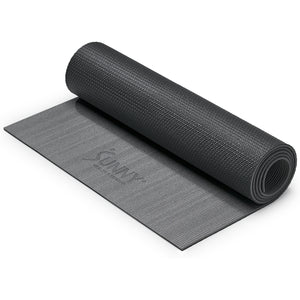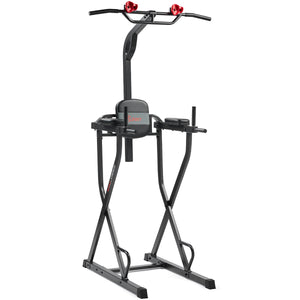The kettlebell swing is a powerful exercise that can help you build muscle, improve strength, and enhance overall athletic performance. This dynamic movement engages multiple muscle groups and provides a full-body workout.
In this blog, we will explore the proper technique for performing kettlebell swings and discuss the various benefits this exercise offers.
Understanding the Kettlebell Swing Technique
Before diving into the specifics, it's crucial to understand the foundational technique of the kettlebell swing. The swing begins with a hip hinge movement, where your hips drive the kettlebell's momentum. It's important to maintain a neutral spine and engage your core throughout the movement. Let's talk about the steps to perform a kettlebell swing correctly:
1. Starting Position
Stand with your feet shoulder-width apart and the kettlebell on the ground in front of you. Position yourself with a slight bend in your knees and hinge at the hips, keeping your back straight and chest up. Grasp the kettlebell handle with both hands, maintaining a firm grip.
2. Hip Hinge and Power Generation
Initiate the swing by forcefully driving your hips forward while maintaining a straight back. The power generated from the hip hinge should propel the kettlebell forward and upward. Imagine using your hips as a hinge, rather than using your arms to lift the kettlebell up.
3. Explosive Extension
As the kettlebell swings forward, your hips should fully extend, and your glutes and core should engage. This explosive extension of the hips generates the momentum needed to swing the kettlebell to chest height.
4. Controlled Deceleration
Allow the kettlebell to reach its highest point, which should be around chest height. At this point, your arms should be straight, and the kettlebell should be weightless for a brief moment. Control the descent of the kettlebell by hinging at the hips and bending your knees slightly. The kettlebell should swing back between your legs, and you should be ready to initiate the next repetition.
Considerations for Kettlebell Swings
Now that you understand the basic technique for kettlebell swings, here are some additional considerations to keep in mind:
1. Start With a Lighter Weight
If you are new to kettlebell swings, it's essential to start with a lighter weight until you have mastered the proper form and technique. This will help you avoid injury and ensure you are engaging the correct muscle groups.
2. Focus on the Hip Hinge
The power generated from the hip hinge is the foundation of the kettlebell swing. Practice the hip hinge movement without a kettlebell to ensure you understand the proper form and technique.
3. Maintain Core Engagement
Throughout the entire movement, it's crucial to engage your core muscles. This will help stabilize your spine and protect your lower back.
4. Range of Motion
The kettlebell swing should be a fluid and controlled movement. Avoid swinging the kettlebell too high, as this can strain your shoulders and put unnecessary stress on your upper back.
5. Seek Guidance From a Professional
If you are unsure about your technique or have any concerns, it's always beneficial to seek guidance from a certified kettlebell instructor or fitness professional. They can provide personalized feedback and ensure you are performing the exercise correctly.
So, in conclusion, kettlebell swings are a versatile and effective exercise for building muscle, improving strength, and enhancing overall athletic performance. By mastering the proper technique and incorporating kettlebell swings into your workout routine, you can experience the numerous benefits this exercise offers. Remember to start with a lighter weight, focus on the hip hinge, engage your core, and maintain a controlled range of motion. With practice and consistency, kettlebell swings can become a valuable addition to your fitness regimen.
Building Muscle Using the Kettlebell Swing
When it comes to building muscle, protein plays a crucial role. However, understanding how protein works and how much you personally need can be confusing. Let’s discuss the importance of protein in muscle growth and how to optimize your protein intake for maximum results when using the kettlebell swing exercise.
First, understanding the different types of muscles in your body is key. There are three types: skeletal, cardiac, and smooth muscles. For our purposes, we will focus on skeletal muscles, which are the muscles you can see and feel, like the glutes, traps, and quads. These muscles are highly adaptable and can be shaped through exercise or lack thereof.
To build muscle, you need to create a small amount of damage to the muscle fibers(1). This is not severe damage, but rather micro-tears that occur during intense exercises like resistance training, such as the kettlebell swing. These microtears need to be repaired by the body, and this is where protein comes into play.
Proteins are essential because they are made up of amino acids, which are responsible for most of the reactions and processes in living cells. Amino acids are obtained through protein-rich foods like meat, fish, eggs, and plant-based proteins like soy and pea protein powder. When you consume protein, your body breaks it down into amino acids.
After intense exercise and the resulting microtears, your body needs amino acids to repair the damaged muscle fibers. The damaged area also activates satellite cells, which are similar to stem cells. These satellite cells flood the damaged area, multiply, and fuse onto muscle fibers to repair the tears and make the muscles bigger and stronger. This process is known as muscle growth or hypertrophy.
To promote muscle growth, you need to ensure that you have enough amino acids available for repair. If you don't consume enough protein, your muscles won't heal properly, and you won't see significant muscle gains. Additionally, inadequate protein intake can make you more prone to injuries and muscle loss(2). It is crucial to eat enough protein to support muscle repair and growth.
The amount of protein you need depends on various factors such as gender, body size, body composition, age, and hormone levels. Generally, consuming around 0.8 grams of protein per kilogram of body weight is recommended to maintain muscle mass(3). Higher protein intake may be necessary for athletes or those looking to build muscle. Some dietitians recommend up to 1.8 grams of protein per kilogram of body weight for professional athletes.
While getting enough protein from whole foods is ideal, some athletes may opt for protein supplements to meet their protein needs more conveniently. However, it's important to note that protein supplements may be low in vitamins, fiber, and minerals. They should not be relied upon as the sole source of nutrition.
In conclusion, protein is essential for muscle growth, and consuming adequate protein is crucial to support muscle repair and growth. For those looking to build muscle using the kettlebell swing exercise, it is recommended to consume enough protein based on your individual needs. Remember that proper nutrition, rest, and exercise are all necessary components for muscle growth(4). Consult with a specialist to determine the right amount of protein for your goals and always prioritize a well-rounded diet.


1. Schoenfeld, B. J. (2020). Science and development of muscle hypertrophy. Human Kinetics.
2. Millward, D. J., Garlick, P. J., Stewart, R. J. C., Nnanyelugo, D. O., & Waterlow, J. C. (1975). Skeletal-muscle growth and protein turnover. Biochemical Journal, 150(2), 235–243. https://doi.org/10.1042/bj1500235. Accessed 11 July 2024.
3. Loenneke, J. P., Loprinzi, P. D., Murphy, C. H., & Phillips, S. M. (2016). Per meal dose and frequency of protein consumption is associated with lean mass and muscle performance. Clinical Nutrition, 35(6), 1506–1511. https://doi.org/10.1016/j.clnu.2016.04.002. Accessed 11 July 2024.
4. Cuthbertson, D. P. (1929). The influence of prolonged muscular rest on metabolism. Biochemical Journal, 23(6), 1328–1345. https://doi.org/10.1042/bj0231328. Accessed 11 July 2024.


























Add Your Name & Email
Please enter your name and email to continue.We won’t display your email publicly.